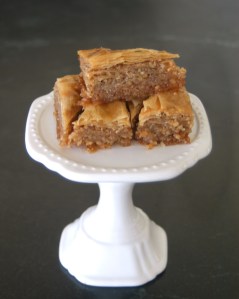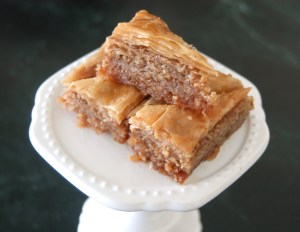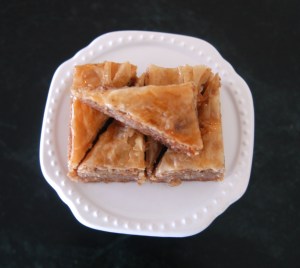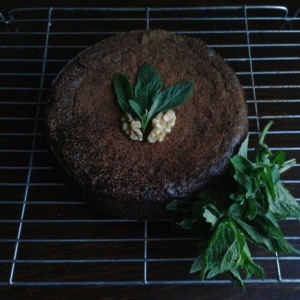Cakes can be instrumental in making you eat healthily. This is a clear example of a cake that will ensure a perfect healthy eating record for at least a week. Impossible you cry? How can a cake help you eat healthily?
Well my friends I will explain.
In this cake it comes down to the construction. After spending upwards of 30 minutes, brushing layers and layers of thin, crisp filo pastry with melted butter and then drowning the resultant baked pastry in enough honey/sugar syrup to drown a beehive, you will only ever want to eat salad. Case in point; after making this cake all I could face eating was vegetable salad – even protein felt like it would not be a good choice!
Having said all that, when you sit down to eat one of the tiny, sticky chewy delicious morsels, the laborious, butter-filled work becomes worth it. That small piece is not only sweet pastry perfection, but also lasts for a long time – one tray makes a staggering amount of pastries which unless you have a stupendously high sugar tolerance will last you for many days to come.
Health-giving and long-lasting – what more do you want?
Ingredients
For the Syrup:
1 cup water
1 cup granulated sugar
1 cup honey
1 cinnamon stick
1 strip orange peel
For the Pastry:
1 pound walnuts, toasted
1½ teaspoons ground cinnamon
½ teaspoon ground cloves
1 (16-ounce) package phyllo dough, thawed
1½ cups unsalted butter
Instructions
To make the syrup, combine the water, sugar, honey, cinnamon stick and orange juice in a small saucepan and bring to a boil over medium heat, before reducing the heat and simmering for 10-15 minutes. Remove from the heat and let cool.
Preheat oven to 350 degrees F.
Process the walnuts, cinnamon and cloves in a food processor until finely chopped.
Over a very low heat, melt the butter in a small saucepan, keeping the pan on the heat to ensure that the melted butter does not solidify.
Brush a 9×13-inch pan with melted butter and place one layer of filo at the bottom. Brush the filo with the melted butter, before adding a second layer, brushing with more butter. Continue this process until 7 sheets have been layered.
Cover the layers of filo with a quarter of the chopped nut mixture. Continue the layering of filo dough, but this time you only need to stack 5 sheets. Spread the next quarter of the mixture over the dough, and repeat the dough layering process twice more. The last layer of filo should have 7 layers of filo, in order to create a thicker top. Finish by brushing the top layer with melted butter. Before cooking cut the baklava into either squares or triangles before baking in the oven for 50-60 minutes until the top is golden brown and crispy. Remove from the oven and drench in the syrup. Leave the baklava to soak for at least 4-5 hours and preferably overnight before serving – this allows the syrup to soak into all the crevasses effectively.





